
Geburtsstein für März: Ein vollständiger Leitfaden + alternative Steine
Für Märzgeburtstage, die den Frühling einläuten, gibt es zwei offizielle Geburtssteine. Die beiden Geburtssteine für März sind Aquamarin und Blutstein. Beide haben ein unterschiedliches Aussehen, sind aber gleichermaßen reich an Wissen.
Der Monat März ist nach Mars, dem römischen Kriegsgott, benannt, da die römischen Soldaten in diesem Monat ihre Feldzüge nach der Winterpause wieder aufnahmen. Genau genommen war der März (oder Martius) der erste Monat im römischen Kalender, bevor Januar und Februar hinzugefügt wurden, um ihn besser an das Mondjahr anzupassen.
Neben der Rückkehr zum Krieg widmeten sich die Menschen der Antike auch wieder der Landwirtschaft und dem Reisen. Die Frühlingstagundnachtgleiche fand am 20. März statt (auf der Südhalbkugel die Herbsttagundnachtgleiche). Zahlreiche Feste fanden statt, die meisten feierten den Mars oder das neue Jahr.
Heute symbolisiert der März Neubeginn, Wiedergeburt und Hoffnung für die Zukunft. Darüber hinaus feiert er als Women's History Month die Gleichberechtigung und am 8. März ist der Internationale Frauentag.
Nachdem wir die Bedeutung des Monats März geklärt haben, werden wir uns mit den Bedeutungen, der Geschichte und den Eigenschaften der beiden Geburtssteine des Monats März, Blutstein und Aquamarin , befassen.
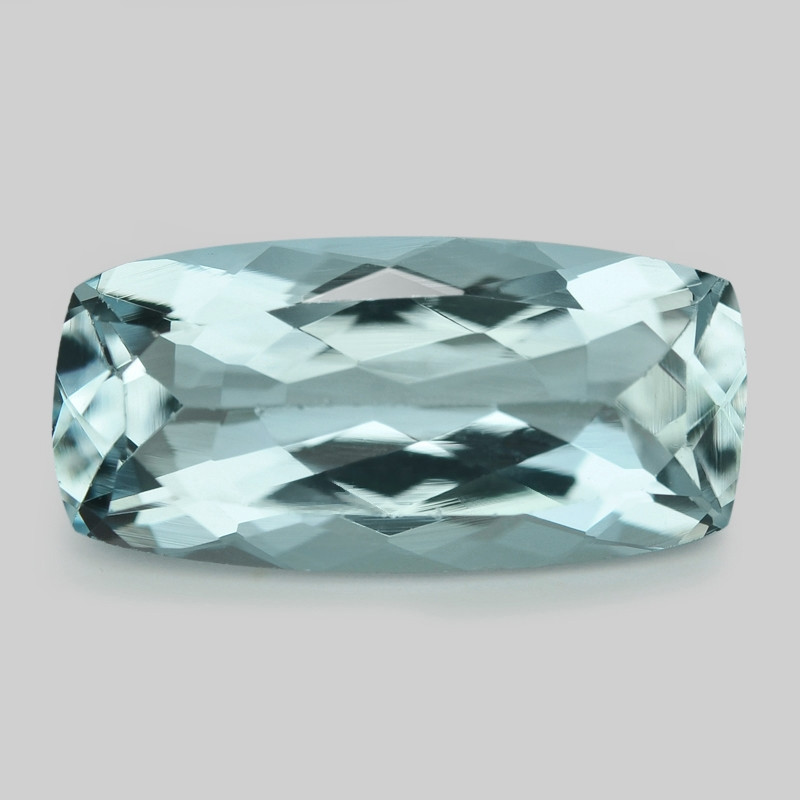
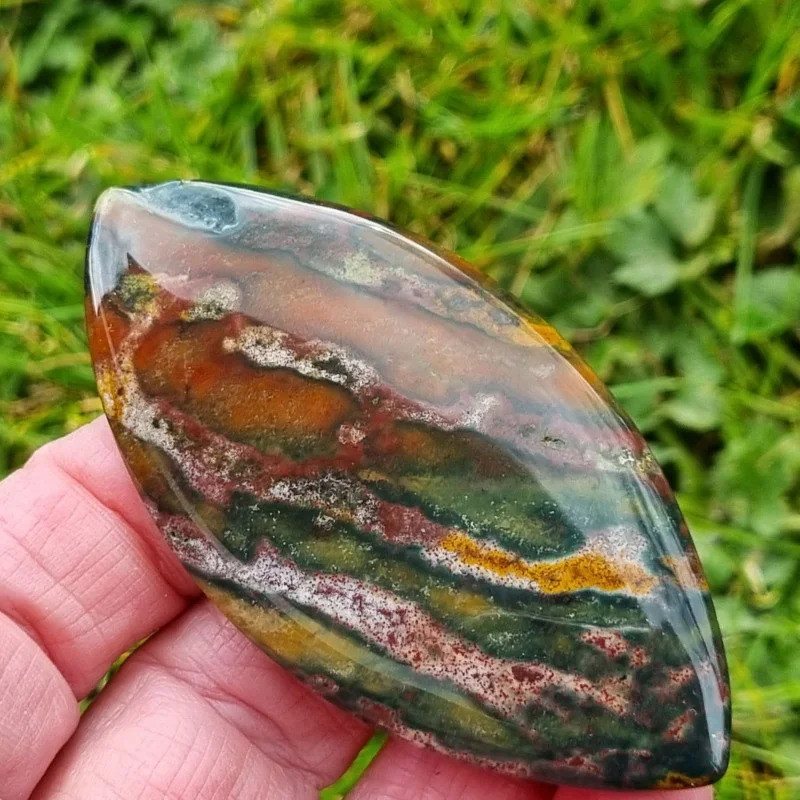 Oben abgebildet: Facettierter Aquamarin-Edelstein (oben), Blutstein-Cabochon (unten)
Oben abgebildet: Facettierter Aquamarin-Edelstein (oben), Blutstein-Cabochon (unten)
Was sind die Geburtssteine für März?
Der März hat zwei traditionelle Geburtssteine: Aquamarin und Blutstein. Diese Halbedelsteine sind gleichermaßen legendär, weisen aber starke Kontraste auf:
Farbe : Aquamarin hat sanfte, meergrüne bis himmelblaue Farbtöne; Blutstein hat eine tiefe waldgrüne Färbung mit karmesinroten Spritzern.
Transparenz : Aquamarin-Edelsteine sind normalerweise transparent; Blutsteine sind normalerweise undurchsichtig.
Edelsteinformen : Aquamarine sind normalerweise facettiert , Blutsteine werden normalerweise zu Cabochons geschliffen.
Hochzeitsjubiläen : Aquamarin ist der traditionelle Edelstein zum 18. Hochzeitstag und Blutstein ist ein alternativer Edelstein zum 14. Hochzeitstag.
Aber warum gibt es für den März zwei Geburtssteine? Kurz gesagt: Geschichte!
Ursprünge der Geburtssteine für März
Die Tradition der Geburtssteine geht auf das 1. Jahrhundert n. Chr. zurück, als Historiker biblische Listen mit 12 Steinen den 12 Monaten des Jahres und den 12 Sternzeichen zuordneten.
In frühen Geburtssteinlisten war der Blutstein der einzige Geburtsstein für den Monat März.
Da es jedoch lange Zeit keine Möglichkeit gab, Edelsteine genau zu identifizieren, sind die tatsächlichen Steine in alten Texten umstritten. Außerdem begannen die Menschen erst im 16. Jahrhundert , die Geburtssteine ihres eigenen Geburtsmonats zu tragen, als Juweliere in Deutschland oder Polen begannen, Schmuck mit Geburtssteinen zu verkaufen.
Die standardisierten Listen, die wir heute kennen, entstanden um 1800, als Tiffany & Co. im Jahr 1870 Gedichte zu Geburtssteinen veröffentlichte, die einem anonymen gregorianischen Autor zugeschrieben wurden.
Hier ist das Märzgedicht aus dieser Broschüre:
„Von ihr, die im März geboren wurde
Kein Edelstein außer Blutstein soll getragen werden
Sie werden ihre Beständigkeit gewährleisten
Wahre Freundschaft und Treue.“
Die National Association of Jewellers (heute Jewellers of America) erstellte 1912 eine standardisierte Liste der Geburtssteine. Der Jewelry Industry Council of America aktualisierte die Liste 1952 und es entstanden weitere (weitgehend ähnliche) Listen.
Auf diesen Listen wurde Aquamarin als Alternative zum Blutstein angegeben.
Heute wird Aquamarin in den britischen und amerikanischen Geburtssteinlisten dem Blutstein vorgezogen, beide sind jedoch immer noch aufgeführt.
Ist der Geburtsstein für März also Aquamarin oder Blutstein? Beides! Man könnte den Blutstein als den „traditionellen“ Geburtsstein bezeichnen, Aquamarin als den „modernen“ Geburtsstein.
Apropos Traditionen: Werfen wir einen Blick auf die Geschichte dieser beiden Edelsteine.
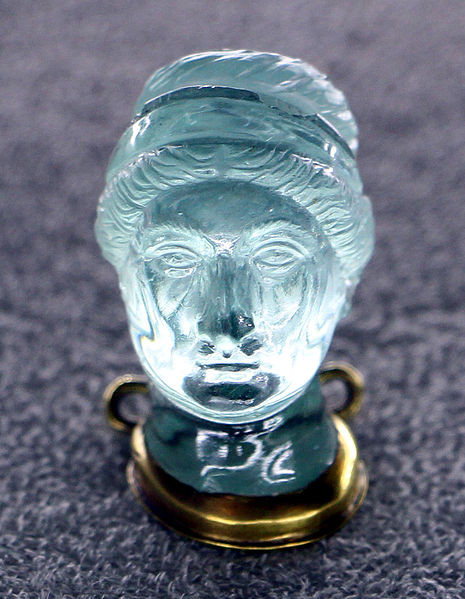 Oben abgebildet: Antike Kunst, Kopf einer Kaiserin in Aquamarin, möglicherweise Matidia, an der Basis mit Gold restauriert; Datiert auf das 2. Jahrhundert (Beschreibung aus dem Italienischen übersetzt) | Bildnachweis: Sailko, CC-BY-SA-3.0
Oben abgebildet: Antike Kunst, Kopf einer Kaiserin in Aquamarin, möglicherweise Matidia, an der Basis mit Gold restauriert; Datiert auf das 2. Jahrhundert (Beschreibung aus dem Italienischen übersetzt) | Bildnachweis: Sailko, CC-BY-SA-3.0
Historischer und kultureller Kontext der Geburtssteine für März
Eine Gemeinsamkeit der beiden Geburtssteine für März ist ihre reiche, weitreichende Geschichte voller Legenden und Überlieferungen!
Historische Verwendung von Aquamarin
Der Name Aquamarin leitet sich von den lateinischen Begriffen „aqua“ für „Wasser“ und „marine “ für „Meer“ ab und weist auf seine Ähnlichkeit mit Meerwasser hin. Obwohl dieser Name erst 1609 entstand, war der früher als „meergrüner Beryll “ bezeichnete Stein schon seit Jahrhunderten bekannt.
Die Alten glaubten, der Geburtsstein des Monats März biete Schutz auf See und schnitzten ihn oft in Talismane. Legenden über die Herkunft des Aquamarins reichen vom verlorenen Schatz der Meerjungfrauen bis hin zu seiner Erschaffung durch den Meeresgott Poseidon (oder Neptun).
Viele Menschen der Antike verbanden Aquamarin mit der Freude der Jugend und der Leidenschaft junger Liebe.
Im Mittelalter glaubte man, Aquamarin schütze vor Vergiftungen (was ihn bei Königen beliebt machte) und vermittle übersinnliche Fähigkeiten.
Christen brachten Aquamarin mit dem heiligen Thomas in Verbindung, dem Schutzpatron der Seefahrer. Manche glaubten auch, der Edelstein fördere glückliche Ehen.
Auch Buddhisten glaubten, Aquamarin sei ein Zeichen der Liebe. In Indien ist es Tradition, Frischvermählten Aquamarinschmuck zu schenken.
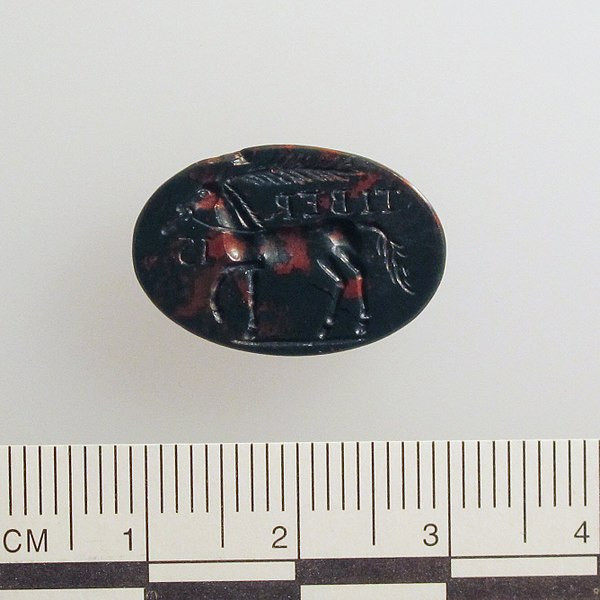 Oben abgebildet: Römisches Kaiserreich, Heliotrop-Intaglio mit hahnenköpfigen Anguipes (Göttlichkeit mit Schlangenbeinen), datiert auf das 3. Jahrhundert n. Chr., ausgestellt im Metropolitan Museum of Art | Bildnachweis: Met Museum, gemeinfrei
Oben abgebildet: Römisches Kaiserreich, Heliotrop-Intaglio mit hahnenköpfigen Anguipes (Göttlichkeit mit Schlangenbeinen), datiert auf das 3. Jahrhundert n. Chr., ausgestellt im Metropolitan Museum of Art | Bildnachweis: Met Museum, gemeinfrei
Blutstein in historischen und mystischen Kontexten
Der Name „Blutstein“ bezieht sich auf seine typischen blutroten, tropfenförmigen Muster.
Der altgriechische Name lautete jedoch „ Heliotrop “, abgeleitet von den Begriffen Helios (Sonne) und Trepo (Wende), da der Stein bei Sonnenuntergang oder wenn er unter Wasser in direktes Sonnenlicht gelegt wurde, vollständig rot aussah.
Die Alten verwendeten Blutstein für praktische und mystische Zwecke.
Die Babylonier schufen Blutsteinsiegel, und Adlige trugen Siegelringe aus Blutstein, um wichtige Dokumente zu stempeln. Mesopotamier und Babylonier nutzten Blutsteine auch zum Wahrsagen, während Ägypter, Römer und Griechen glaubten, der März-Geburtsstein mache sie im Kampf oder im Sport stärker.
Der antike römische Gelehrte Plinius der Ältere schrieb, Blutsteine seien Spiegel der Sonne und ermöglichten die Beobachtung von Sonnenfinsternissen. Ein anderer antiker römischer Autor, Damigeron, schrieb, Blutsteine würden die Zukunft vorhersagen. „Wenn man sie in ein silbernes Becken mit Wasser legt und der Sonne entgegenstellt, drehen sie sich zu und lassen sie blutig und trüb erscheinen.“
Blutsteine mit eingravierten Sonnen oder Fackeln wurden oft von freigelassenen Sklaven getragen, um ihre Befreiung zu symbolisieren.
Ein gebräuchlicher Spitzname war „ Märtyrerstein “, woraus schließlich der Name „Blutstein“ entstand.
Eine christliche Legende besagt, dass Blutstein bei der Kreuzigung Jesu Christi entstand. Der Stein entstand, als Christi Blut entweder auf die grüne Erde oder auf einen grünen Jaspis unter dem Kreuz fiel (die Überlieferungen variieren). Daher glaubten einige, der Stein könne Durchblutungsstörungen heilen.
Im Mittelalter blieb die Verbindung zu den Märtyrern bestehen, und es gab Blutsteinskulpturen, die Märtyrertaten darstellten, sowie Amulette, von denen man glaubte, sie repräsentierten das Opfer Christi.
Im Mittelalter stellten Europäer Blutstein-Elixiere zur Behandlung von Blutungen, Tumoren und Schlangenbissen her. In Indien wurde gemahlener Blutstein als Aphrodisiakum verwendet.
Heutzutage ist Indien eine der wichtigsten Quellen für Blutstein, was uns zum Ursprung dieser Märzkristalle bringt!
 Abbildung oben: Aquamarin-Rohstein
Abbildung oben: Aquamarin-Rohstein
Geologische Ursprünge und Eigenschaften der Geburtssteine für März
Aquamarin ist eine Beryll-Variante. Beryllsteine sind sehr beständig und erreichen Härtegrade von 7,5 bis 8 auf der Mohs-Härteskala . Diese Mineralien bilden sich üblicherweise in beryllhaltigen Granitpegmatiten.
Vorhandene Verunreinigungen führen zu dieser Farbpalette, wie beispielsweise das zweiwertige oder dreiwertige Eisen, das die blauen bis grünen Farbtöne des Aquamarins kennzeichnet. Parallele oder senkrechte Gruppen von Hohlröhreneinschlüssen können einen leichten Chatoyance-Effekt (Katzenaugeneffekt) oder Asterismus (Sterneffekt) hervorrufen. Einige der schönsten Aquamarine stammen aus Sibirien und Brasilien.
Blutstein ist eine Varietät des Chalcedons oder mikrokristallinen Quarzes. Manche klassifizieren Blutstein als eine Art Jaspis , eine Chalcedon-Unterkategorie für undurchsichtige, gemusterte Steine.
Die Entstehung dieses Geburtssteins für März ähnelt der anderer Quarzsteine, die roten Flecken entstehen jedoch durch Hämatit -Einschlüsse. Die meisten Blutsteine in Edelsteinqualität stammen aus Indien.
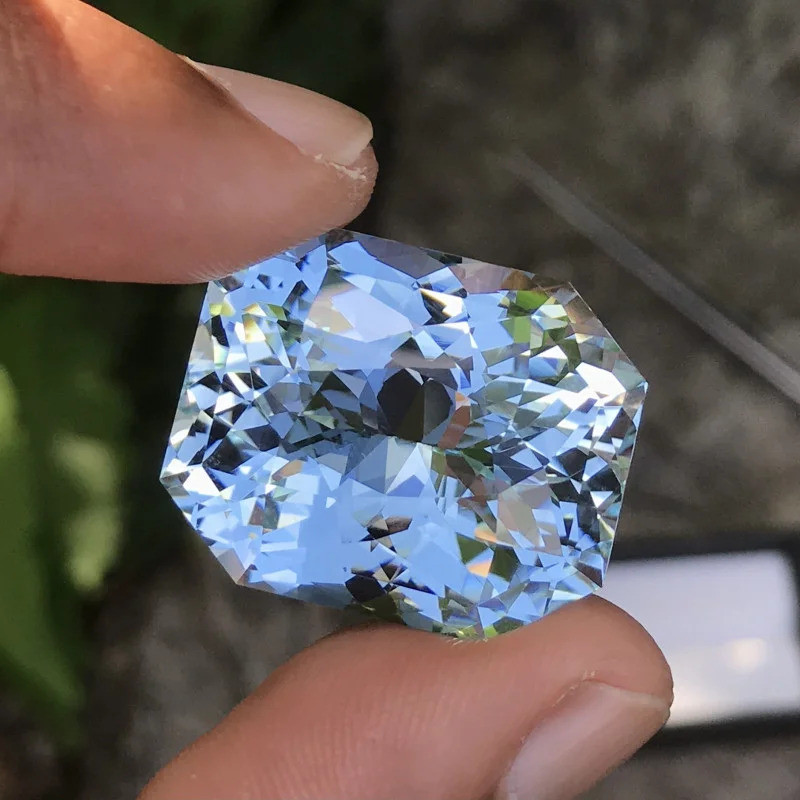 Oben abgebildet: Facettierter blauer Santa Maria Aquamarin
Oben abgebildet: Facettierter blauer Santa Maria Aquamarin
Blau- und Grüntöne: Die zarte Palette von Aquamarin
Obwohl Aquamarin nur von Blau bis Grün reicht, ist seine Farbpalette überraschend vielfältig. Höhere Werte führen zu reineren, gesättigteren Blautönen, doch in der Regel sind die Farben dieser März-Geburtssteine blassgrünlich-blau.
Bestimmte Farben haben unterschiedliche Handelsnamen:
Santa Maria : Mitteldunkles, hochgesättigtes Blau; Entdeckt in der brasilianischen Mine Santa Maria de Itabira
Espirito Santo : Geringere Blausättigung als Santa Maria, aber einzigartige Brillanz und tiefe Farbe
Maxixe : Sehr dunkelblaue Farbe; kommt in der brasilianischen Maxixe-Mine selten auf natürliche Weise vor; wird normalerweise durch eine instabile Bestrahlungsbehandlung erzeugt (neigt zum Verblassen)
Nampula : Blauer Igel; gefunden in der mosambikanischen Provinz Nampula
Pedra Azul : Eisblau; Gefunden im brasilianischen Bezirk Pedra Azul
Da reinere Blautöne wertvoller sind, werden viele Aquamarin-Edelsteine einer Wärmebehandlung unterzogen, um grüne Untertöne zu entfernen.
Wie sieht nun ein Blutstein aus?
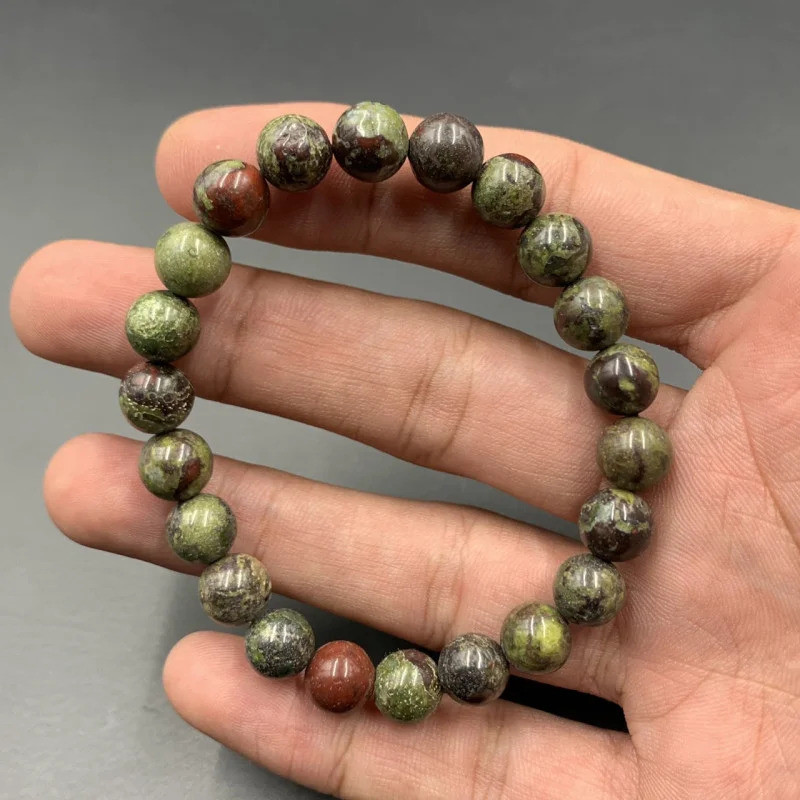
Die Mystik des Blutsteins: Tiefgrüne und rote Sprenkel
Blutstein wird technisch gesehen als eine Art Plasma betrachtet, eine halbdurchsichtige bis undurchsichtige grüne Chalcedon-Variante mit gelben, weißen oder roten Sprenkeln.
Der klassische Blutstein hat eine waldgrüne Farbe mit roten Flecken. Die Flecken und manchmal auch Streifen auf dem Blutstein können auch orange, braun, weiß, gelb oder eine Kombination dieser erdigen Farbtöne sein.
Neben den roten Hämatit-Einschlüssen sind für die Färbung des Blutsteins auch andere Mineraleinschlüsse wie Amphibol, Chlorit und Pyroxen verantwortlich.
Manche klassifizieren „Heliotrop“-Blutsteine als durchscheinend mit roten Sprenkeln und „Plasma“-Blutsteine als undurchsichtig mit sehr wenigen roten Flecken.
Einige Variationen mit Handelsnamen:
Blutjaspis : rötlich-schwarz gefleckt mit weißer Aderung
Fancy Jasper : Vorherrschende Farben neben Grün und Rot oder abwechslungsreiche Farbkombinationen
Neben dem Aussehen besteht ein weiterer Unterschied zwischen Aquamarin und Blutstein in ihrer spirituellen Bedeutung und Verwendung als Heilsteine .
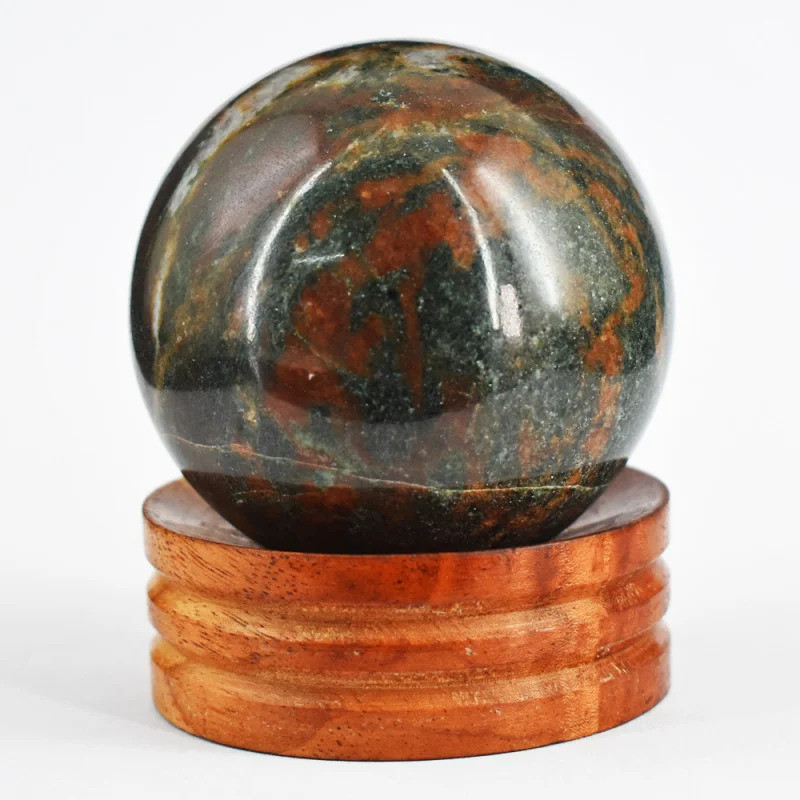 Abbildung oben: Blutstein-Heilkugel
Abbildung oben: Blutstein-Heilkugel
Spirituelle und metaphysische Bedeutung
Der Aquamarin steht für Reinigung, Gelassenheit und Jugend. Der Blutstein hingegen symbolisiert Stärke, Ausdauer und Opferbereitschaft.
In der Energieheilung ist Aquamarin ein Chakra-Stein für das Halschakra, während Blutstein das Wurzelchakra (Basischakra) öffnet.
Allerdings überschneiden sich einige Bedeutungen der Geburtssteine für März:
Mut : Beiden Steinen wird nachgesagt, dass sie den Mut stärken. Aquamarin konzentriert sich auf die Selbstermächtigung, mutig die Wahrheit auszusprechen, und Blutstein auf den körperlichen Mut, seinen Träumen nachzugehen.
Reinigung : Jeder Stein kann reinigende und klärende Eigenschaften haben, Negativität entfernen und Ihnen helfen, neu anzufangen.
Hindernisse überwinden : Aquamarin soll helfen, emotionale Hindernisse, wie die Kommunikation in einer Beziehung, zu überwinden. Blutstein soll schützend wirken und helfen, Hindernisse auf dem Weg zum Erfolg zu überwinden.
Astrologisch gesehen passt Aquamarin perfekt zur sensiblen Wasserenergie der Fische (geboren vom 19. Februar bis 20. März). Blutstein hingegen spiegelt den feurigen, ehrgeizigen Widder (geboren vom 21. März bis 19. April) wider, der vom Mars beherrscht wird.
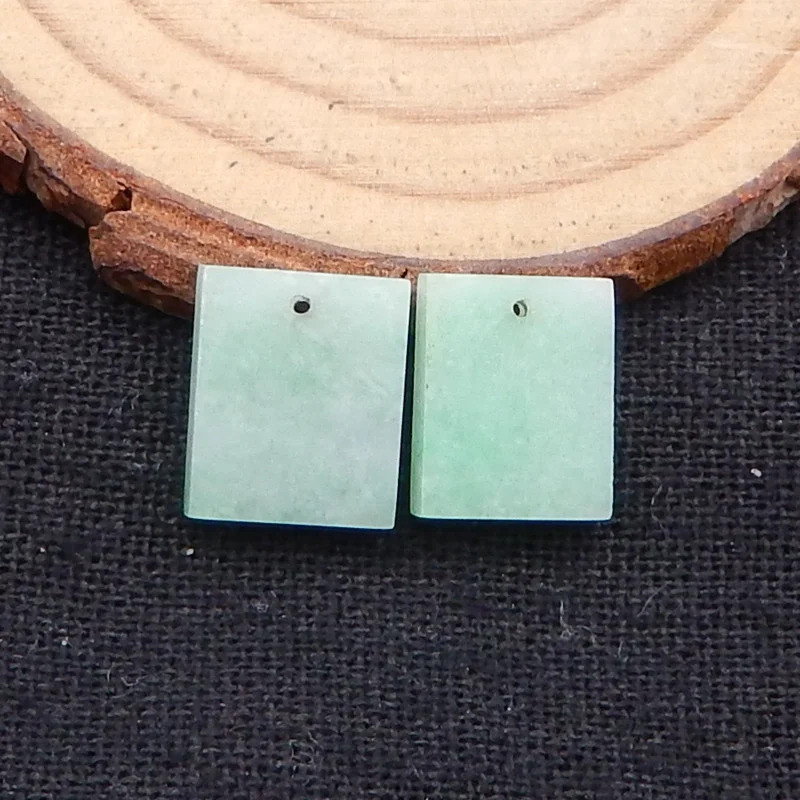 Oben abgebildet: Geschnitzte Jadeohrringe
Oben abgebildet: Geschnitzte Jadeohrringe
Entdecken Sie alternative Geburtssteine für März
Sind Aquamarin und Blutstein nicht Ihr Ding? Sie haben andere Möglichkeiten!
Der mystische Geburtsstein für März, dessen Wurzeln in der alten tibetischen Astrologie liegen, ist Jade , die die Süße des Frühlings mit der Beständigkeit des Mars einfängt.
Ein zweiter alternativer Geburtsstein für März ist Jaspis – ähnlich wie Blutstein, aber vielfältiger.
Eine weitere grüne Option ist der Smaragd , der Geburtsstein des Frühlings. Als Beryll-Schwester des Aquamarins hat der Smaragd eine tiefere grüne Farbe und steht ebenfalls für neues Wachstum.
Preislich gesehen ist Blutstein viel erschwinglicher, während Aquamarin für manche teuer sein kann.
Einige günstigere Alternativen zum Geburtsstein Aquamarin:
Sie können sich auch für einen synthetischen Aquamarin entscheiden, der im Labor hergestellt wird, aber dieselben chemischen und physikalischen Eigenschaften wie natürlicher Aquamarin aufweist.
 Oben abgebildet: Königin Elisabeth II. mit ihrer aquamarinblauen Tiara (siehe unten) beim brasilianischen Staatsbankett am 7. März 2006 | Bildnachweis: Agência Brasil, CC-BY-SA-3.0 | Originaldatei
Oben abgebildet: Königin Elisabeth II. mit ihrer aquamarinblauen Tiara (siehe unten) beim brasilianischen Staatsbankett am 7. März 2006 | Bildnachweis: Agência Brasil, CC-BY-SA-3.0 | Originaldatei
Zeitgenössische und berühmte Schmuckdesigns
Sowohl Aquamarin als auch Blutstein wurden in der modernen Zeit in vielen einzigartigen Schmuckdesigns verwendet.
Aquamarin
Als Geburtsstein für den März oder einfach als wunderschönes Accessoire glänzen facettierte Aquamarin-Edelsteine mit sanfter Farbe, aber kraftvoller Ausstrahlung.
Aquamarin-Geburtssteinringe – oder Verlobungsringe – erfreuen sich großer Beliebtheit und werden oft neben weißen oder hellen Akzentsteinen wie weißen Diamanten eingefasst.
Einige berühmte Beispiele für Aquamarinschmuck sind:
Aquamarin-Tiara von Königin Elisabeth : Im Auftrag der britischen Königin Elisabeth schuf Garrard 1957 diese Platin-Tiara mit brasilianischen Aquamarinen und Diamanten, die ihr 1953 vom brasilianischen Präsidenten Getúlio Vargas geschenkt wurde. Der Gouverneur von São Paulo stiftete 1971 einen größeren Aquamarin als Ersatz für den Mittelstein.
Hirsch-Aquamarin-Anhänger : Dieser smaragdgrüne Aquamarin mit 109,92 Karat ist in einen Weißgoldanhänger mit 118 Mikropavé-Diamanten eingefasst. Er gehörte einst dem französischen Kaiser Ludwig XV., der angeblich seine beruhigende Wirkung zu nutzen wusste.
Meghan Markles Verlobungsring : Dieser Gelbgoldring hat einen smaragdgrünen, hellblauen Aquamarin-Mittelstein mit 13 Karat und kleineren Akzentdiamanten. Der Ring wurde von Asprey gefertigt und Diana um 1996 von Lucia Flecha de Lima geschenkt. Dianas Sohn Prinz Harry schenkte den Ring Meghan Markle, die ihn an ihrem Hochzeitstag 2018 trug.
Blutstein
Im Gegensatz zum Aquamarin ist der Blutstein ein reicher, erdiger und schwerer Stein mit Farben, die diese Eigenschaften widerspiegeln.
Der Geburtsstein für März wird üblicherweise in Cabochons oder Schnitzereien geschliffen, daher sind viele Blutsteinschmuckstücke Anhänger oder Perlenarmbänder. Geschnitzte oder kaschierte Blutsteinringe im antiken Stil erfreuen sich jedoch zunehmender Beliebtheit, insbesondere in wunderschönen Goldfassungen.
Blutsteine kommen in königlichem Schmuck selten vor, doch ein königlicher Blutstein (der wohl berühmteste) ist das Siegel des Heiligen Römischen Kaisers Rudolf II. (1552 bis 1612). Das Siegel des Kaisers ist in diesen Blutstein eingraviert und im Louvre in Paris ausgestellt.
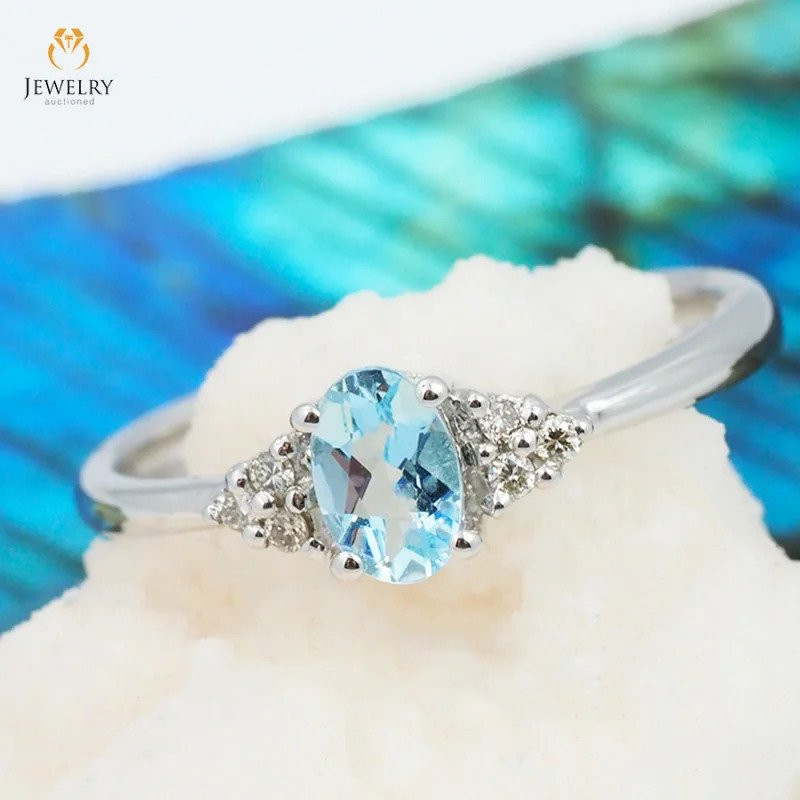
Welcher Geburtsstein für März passt zu Ihnen?
Sind Sie vom sanften, ätherischen Aquamarin oder dem satten, erdigen Blutstein angetan? Beide Geburtssteine für März bieten Mut und Heilung und stehen gleichzeitig für Neuanfänge. Unabhängig davon hat jeder Stein in Schmuckstücken mit Geburtssteinen für März zeitlosen Reiz!
Suche nach Gemstone Encyclopedia
Verwandte Auktionen
In Verbindung stehende Artikel
Der traditionelle und beliebteste Geburtsstein für Februar ist der Amethyst, eine wunderschöne violette Quarzart. Erfahren Sie alles über die Bedeutung und Geschichte dieses Geburtssteins sowie über alternative Geburtssteine für Februar!
10th Mar 2020
Der traditionelle Geburtsstein für April ist der Diamant, ein zeitloser Edelstein. Dieser Leitfaden behandelt die Geschichte, Bedeutung, Verwendung und den Geburtssteinschmuck des Diamanten sowie alternative Geburtssteine für April!
21st Apr 2020
Obwohl Diamanten seit vielen Jahren die traditionelle Wahl sind, entscheiden sich Paare aus verschiedenen Gründen immer häufiger für Edelsteine. Edelsteine sind nicht nur günstiger als Diamanten, sondern bieten auch eine größere Auswahl an Formen.
9th May 2018
Neue Artikel
Schnitzereien aus Palmenelfenbein, auch pflanzliches Elfenbein genannt, sind eine natürliche Alternative zu Elefantenelfenbein und werden ethisch vertretbar aus den Nüssen der südamerikanischen Phytelephas-Palme gewonnen. Erfahren Sie in diesem Ratgeber alles Wissenswerte über Palmenelfenbein!
15th Jan 2026
Chrysanthemenblütensteine sind Naturwunder mit einem weißen Kalzit-, Celestin- oder Andalusit-Blumenmuster, das sich vom schwarzen Kalkstein oder Tonstein abhebt.
13th Jan 2026
Der Regenbogen-Gitter-Sonnenstein ist eine Feldspatvarietät mit drei wunderschönen optischen Effekten, die durch verschiedene Einschlüsse hervorgerufen werden. Sein feuriges Farbenspiel und das Gittermuster machen ihn zu einem seltenen Sammlerstück!
12th Jan 2026
Artikelkategorien
How To's is where you will find helpful articles from gem Rock Auctions on how to cut gemstones, select gemstones and buy gemstones.
9 Artikel




